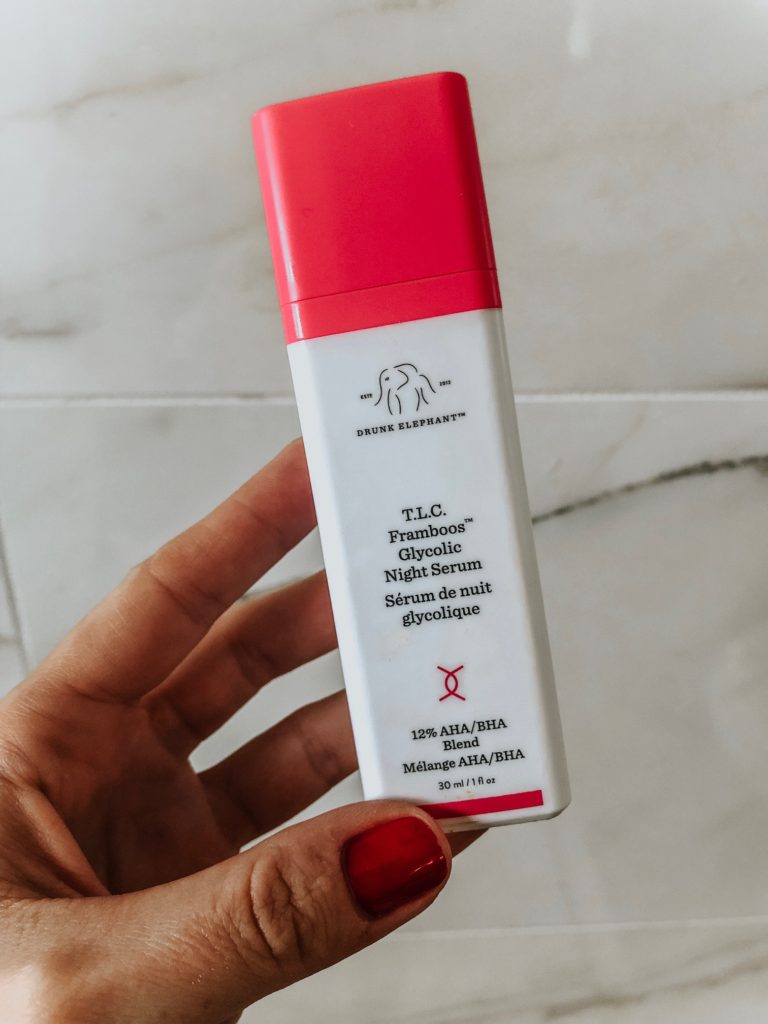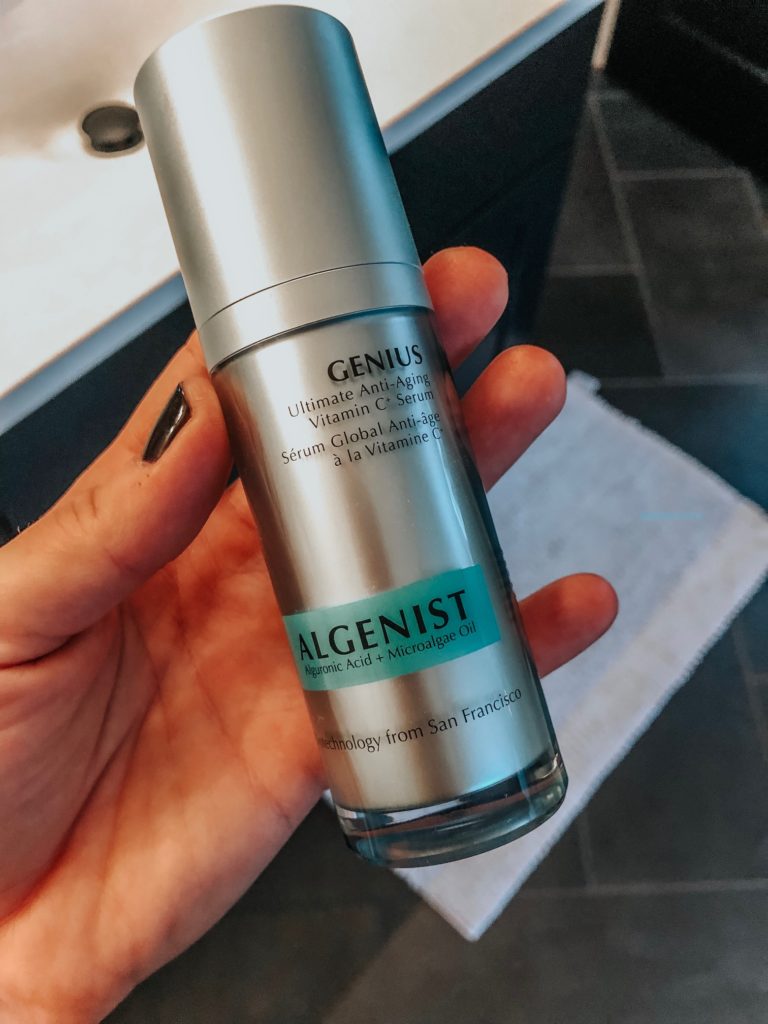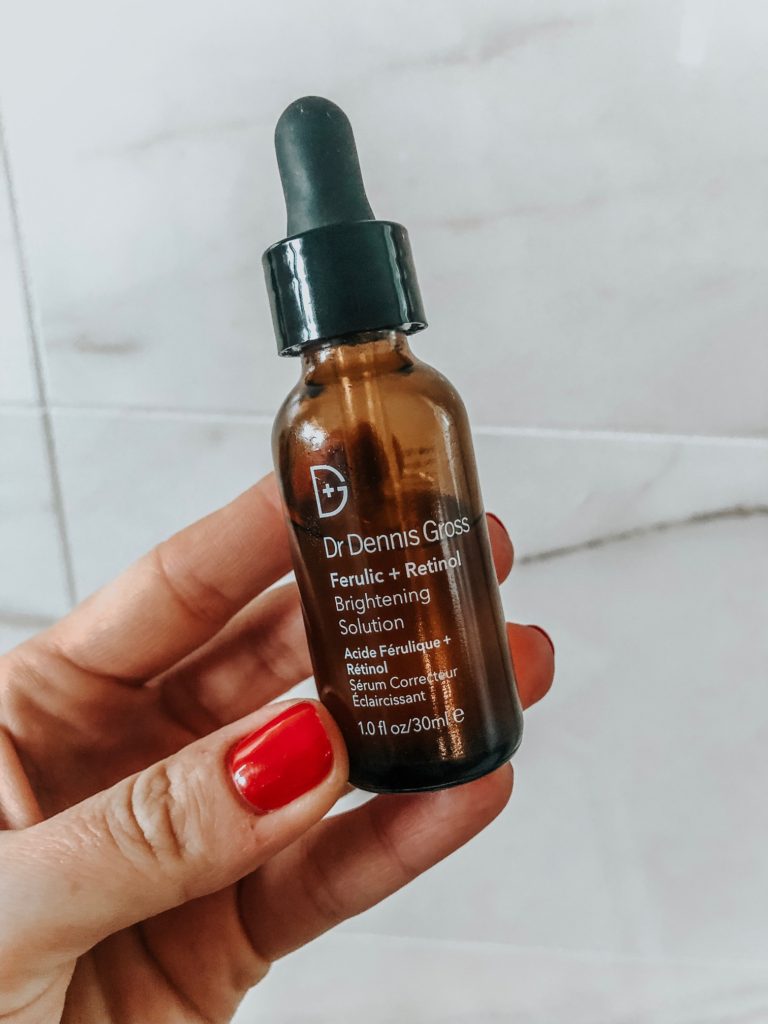
Honestly, I decided to tackle this topic for personal reasons as I have always been a little confused by all of the different acids in my skincare products and what AHA and BHA really means. Back in the day, if someone told you to put acid on your skin, you’d run the other way and tell them they’re bat sh*t crazy. Ok, psycho killer. Now, acid is a buzz word in skincare and we’re all trying to figure out what products we need in the lineup.
I have normal/dry skin (some sun damage) and hormonal acne from time to time so what acids should I be seeking out in my products? I wasn’t entirely sure. Also, how many products with acid should I be using? More isn’t better in this instance. So I researched and decided to outline my findings for you. Let’s break it down.

First, let’s talk about the difference between AHA and BHA.
AHA- Alpha Hydroxy Acids: A family of water-soluble exfoliants that work by dissolving the glue that holds skin cells together so they can slough off. With them out of the picture, your skin is softer, smoother and brighter. Plus, AHA’s hydrate skin, too. The catch? High concentrations can dry out and irritate skin.
BHA- Beta Hydroxy Acids: Salicylic acid is the only BHA used in skincare. Unlike AHAs, it’s oil-soluble. This means it does double duty: it exfoliates the surface of the skin AND gets inside the pores, unclogging them from within. Plus, it has one more trick up its sleeve: it has anti-inflammatory properties that soothe redness and irritations.
AHA’s are typically best for aging, dry or sun-damaged skin while BHA’s are best for oily, combination or acne-prone skin.
Ok, now that we got that out of the way, let’s get into the different types of acid we see in our products:
Salicylic Acid: BHA (the only one that is BHA), cleanses and unclogs pores, builds elastin and collagen; Skin type: combination, oily or acne-prone skin (caution: can’t use BHA when pregnant)
Hyaluronic Acid: AHA, for dehydrated skin, hydrates and plumps up the skin; Skin type: all skin types but best for dry or acne-prone that needs an oil-free option. More on this acid later but basically, it’s the only acid that can be used in combo with all other acids as it’s meant to counteract the harsh anti-aging acids like retinol.
Citric Acid: AHA, increases collagen production, speeds up cell renewal and balances skin pH; Skin type: hyper pigmented skin with sun spots but will agitate sensitive skin
Glycolic Acid: AHA, peels and exfoliates, reduces fine lines, hyperpigmentation and spots, and uneven skin tone; Skin type: all skin types but especially for those with fine lines and wrinkles; not for those with really sensitive skin
Lactic Acid: AHA, softens and improves skin texture, exfoliates, speeds up cell turnover; Skin type: all skin types but particularly those with acne scarring or dry, sensitive skin
L-ascorbic Acid: AHA, A weak acid, L-Ascorbic Acid is the pure form of vitamin C. Think Drunk Elephant C Firma. It fights free radicals, brightens skin and boosts collagen. But it’s unstable AF. It goes bad super quickly when exposed to light, heat and air. High concentrations also sting and irritate skin. That’s why lots of people prefer to use Vitamin C derivates. They’re less effective but gentler on the skin and last way longer too.
Ferulic Acid: AHA, reduces signs of aging, enhances retinols, promotes healthy skin, prevents sun damage, fights free radicals and protects collagen; Skin type: everyone (this is why I use Dr. Dennis Gross’ Retinol + Ferulic product)
Retinoic Acid: AHA, great for anti-aging, dullness, texture, enlarged pores, non-cystic acne and hyperpigmentation. Retinoic acid is the only form of Vitamin A your body can recognize and use to treat wrinkles. It fights free radicals, speeds up the skin’s natural exfoliating process and boosts the production of collagen. But it’s super harsh on the skin. It can cause severe dryness, peeling and irritation. That’s why it’s prescription only. OTC forms of retinoids, like retinol and retinaldehyde, must be converted into retinoid acid to work their magic. They’re gentler but less effective.
Alright.. now that your brain is about to explode let’s get to the real reason I wanted to write this post. Can you layer different acids? We know that too much exfoliation is going to strip the skin, irritate it and turn it red. No thanks. So for the love of your skin, pick the one exfoliating acid for your skin and stick to it. These are your exfoliating acids that you should pick ONE of:
- Dry and sun-damaged skin: glycolic acid (an overnight cream)
- Oily and acne-prone skin: salicylic acid
- Sensitive skin: lactic acid
Here’s where it gets tricky. Let’s say that your skin could really benefit from more than one type of acid. Maybe you have oily but sun-damaged skin that needs both glycolic and salicylic acids or it’s dry and sensitive and a combo of AHAs suits it better than a high concentration of glycolic acid. What do you do in this case?
This is where a product like Drunk Elephant’s TLC Night Serum comes in handy because it has a combination of acids in it and it’s formulated so the overall ratio of acids does the exfoliating job without irritating skin.

Now, what about layering acids and retinoids and vitamin C? Many of us are worried that layering AHAs, vitamin C and retinoids can make them ineffective. This isn’t really an issue. Even when these ingredients work best at different pHs, they never deactivate one another completely to make them useless.
Nope, the real risk here is irritation. If you have sensitive skin, layering AHAs, vitamin C and retinoids is a sure way to get an irritation. But even if your skin is more resistant, it’s best to start slow and introduce these superstars into your skincare routine slowly.

I recommend using vitamin C in the morning under sunscreen (it boosts its effectiveness) and alternative AHAs and retinoids at night.

Another trick is to use products that contain two or more of these superstars. Same reason as the acids. They’re formulated to give you the most benefits with the fewer side effects. This is where I use Dr. Dennis Gross’ retinol + Ferulic acid. Another favorite is SkinCeuticals CE Ferulic.

Now, what about layering hyaluronic acid with other acids? YES!!! You can layer hyaluronic acids with anything and everything and it is recommended that you do. Especially if you’re using anti-aging superstars like retinol, glycolic acid and vitamin c. Those anti-aging superstars are pretty harsh on the skin, leaving it dry and sensitive.
Hyaluronic acid deeply hydrates skin, leaving it softer and smoother. If your retinol is leaving your skin feeling tight, reach for a hyaluronic acid serum pronto! I love Peter Thomas Roth’s Hyaluronic water drench moisturizer and just picked up this hyaluronic acid from the check out stand at Trader Joe’s.. why not, right?! It gets pretty good reviews online!


I know this was information OVERLOAD. And now you’re probably like what the actual F do I do now? Here’s my recommendation: if you are still completely lost, go to an aesthetician and get a free skin consultation and ask all the questions. Start small and incorporate products slowly. These are the current products I’ve used/am using/alternating:
If you have questions or comments, leave them below!
xx, H

My daytime routine is killer, I’m loving it (so thank you for that!) but my nighttime routine is leaving my face a little dry (using Tula cleanser and rosehip oil only). So if i want extra moisture for night should I use the hyaluronic serum/moisturizer?
Hi Sam!! Yes, incorporate a Hyaluronic Acid/moisturizer into your nighttime routine. Maybe even try a night mask like Laneige 2x a week 🙂 Anything with water/moisture will be great for you!!